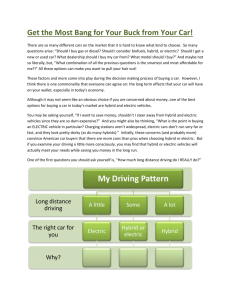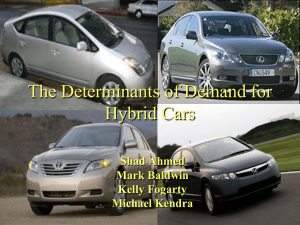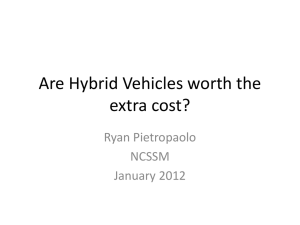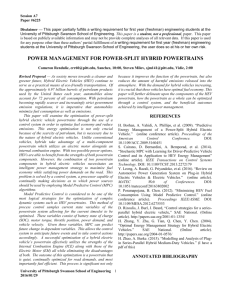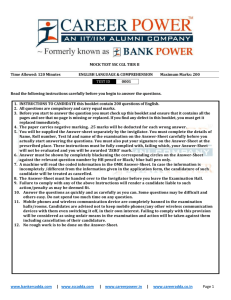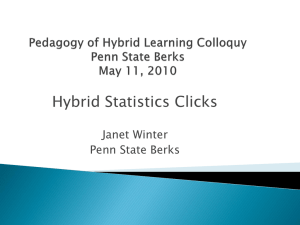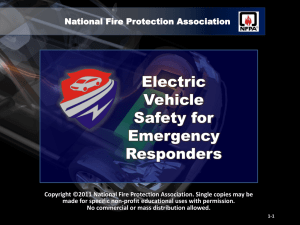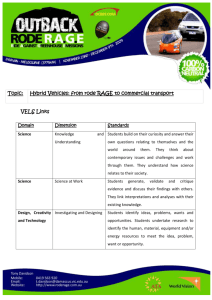kiosk presentation slide deck (PPT)
advertisement
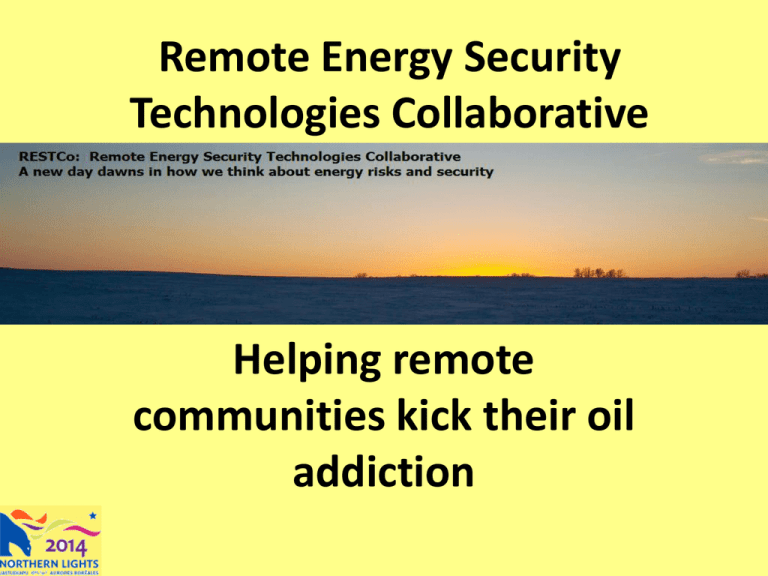
Remote Energy Security Technologies Collaborative Helping remote communities kick their oil addiction Heating fuel, diesel, gasoline, propane, kerosene: it all comes from oil – produced and refined in the south. RESTCo Oil – highly valuable commodity: • Feedstock for plastics • Energy store from millions of years of collecting solar energy • Liquid makes for easy transfer and storage • Very high energy density RESTCo Oil – costly commodity: • Finite supply = rising prices • Extreme locations / techniques • Pollution: water, air, land, thermal, noise • Carbon dioxide emissions > GHGs > climate change RESTCo Oil – how much longer can remote communities rely on there being enough, at an affordable price, and tolerate the environmental and climate impacts resulting from its use? RESTCo Oil use for fuel means: • Reduced Arctic ice • Permafrost melt • Stronger storms • Weather instability • Changing wildlife locations and migration patterns … RESTCo Oil – what’s the alternative? The RESTCo Vision for reducing the oil vulnerability of remote northern communities RESTCo The RESTCo Vision for Energy 1) Energy efficient, healthy housing 2) Efficient electric and hybrid vehicles, useful configurations 3) Integrate local, renewable energy sources RESTCo RESTCo Oil – what’s the alternative? 1. Energy efficient, healthy, robust, adaptable, transportable housing designed for the north, by the north TRIFLEX Housing RESTCo TRIFLEX Housing Accommodates permafrost by using 3 adjustable points to carry the entire structure RESTCo TRIFLEX Housing Extremely energy efficient due to high insulation, structure sealing, energy recovery ventilator, LED lighting … RESTCo TRIFLEX Housing Robust enough to be transported after construction if necessary, using 3 foundation points on skis, wheels or floats RESTCo TRIFLEX Housing No interior load-bearing walls means complete flexibility in designing interior, or use of movable walls to retain flexibility RESTCo RESTCo TRIFLEX Housing 3 foundation points Flex place Flex interior layout Supports renewable energy production RESTCo Oil – what’s the alternative? 2. Local transportation that uses less or no oil-based fuels, such as electric and hybrid vehicles, in forms that fit the north: ATVs, boats, trucks, and snowmobiles RESTCo Electric & Hybrid Vehicles Modern advanced batteries, with proper thermal management, can deal with cold temperatures Large vehicle batteries can store energy to power a house if there is a power outage RESTCo Electric & Hybrid Vehicles In remote communities, roads are short, so range is usually not a big issue A small electric truck can travel a useful distance on the electricity used by a block heater so the diesel or gasoline truck can start RESTCo Electric & Hybrid Vehicles Mid-range electric-hybrid Euclid-Hitachi truck Payload: 255 tonnes (other sizes available) RESTCo Electric & Hybrid Vehicles Balqon medium all-electric truck, 100 km/h, 4 tonne capacity, 150 km range, 3 hr recharge Suitable for hauling water, septic waste RESTCo Electric & Hybrid Vehicles Isuzu NPR converted to electric and customized in Canada. 40 km/h, up to 5 tonne payload, 3080 km range (depends on battery option chosen) RESTCo Electric & Hybrid Vehicles A light duty (3/4 ton) extended range electric truck (hybrid) for the North (50 km electric, 600 km gasoline range per charge) RESTCo Electric & Hybrid Vehicles Nemo all-electric truck, 40 km/h, 500 kg capacity, 100+ km range, 3 hr recharge Suitable for maintenance, service workers RESTCo Electric & Hybrid Vehicles RESTCo More Electric Snowmobiles RESTCo Electric & Hybrid Vehicles What if your quiet, electric snowmobile could float? ‘Snowmoboat’: survive thin ice. RESTCo Electric & Hybrid Vehicles Polaris 2014 Electric Ranger ATV RESTCo Electric & Hybrid Vehicles Electric Work Boat RESTCo Electric & Hybrid Vehicles Larger power plants available if required (9500 horsepower azipod version shown) RESTCo Oil – what’s the alternative? 3. Switching to renewable, local energy sources, such as tidal, ocean currents, submerged run-of-river, wind, solar … RESTCo Does it get windy in the north? Kite Skiing in Pang RESTCo Wind turbines at Kotzebue, Alaska Average wind speeds in Pang are about 4 m/s (25 km/h), and blow from the west about 27% of the time. RESTCo Northern communities have more than wind resources • Eastern Nunavut has high tidal range • For 8 months a year, there is plenty of solar energy available • Rivers can provide run-of-river hydroelectricity • Ocean currents can turn generators RESTCo Utility ‘closet’ for cluster of houses (commercially available now) RESTCo Oil – in the interim: • Reduce oil use and dependence • Clean up the messes oil has already made • Prepare for oil spills to come • Building local energy selfsufficiency RESTCo Clean up the messes oil made RESTCo Prepare for oil spills yet to come Extreme Spill Technology Up to 94.4% oil recovery in one pass Effective spill recovery in waves, BEFORE the oil hits shore RESTCo Remote Energy Security Technologies Collaborative Integrated Community Solutions Talk to us, we can help. Remote Energy Security Technologies Collaborative Helping remote communities kick their oil addiction RESTCo.ca


